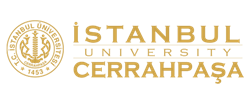Objective: Our study aims to examine the acute effects of slow controlled breathing on fatigue, heart rate, blood pressure, and respiratory rate during the recovery period after moderate-intensity aerobic exercise in young adults.
Methods: Twenty-six volunteers between the ages of 18 and 30 were included in the study. Participants received the same aerobic exercise program. During the recovery period, the slow breathing group performed slow breathing with a respiratory frequency of 0.1 Hz (6 breath cycles/minute) combined with lower extremity static stretching exercises, while the control group only received a stretching exercise program. A modified Borg CR10 scale was used to evaluate perceived fatigue, a finger pulse oximeter was used for heart rate, and a digital sphygmomanometer was used for blood pressure. Participants were evaluated 5 times: at the beginning of the study, at the end of the aerobic exercise program (the 0th minute of recovery), 3rd minute of recovery, 6th minute of recovery, and 12th minute of recovery.
Results: At the end of the study, no significant differences were found between the groups for any parameter at each time point (P > .050). There were statistically significant time-dependent differences within groups in terms of respiratory rate (slow breathing group P=.018, control group P > .001), fatigue (slow breathing group P ≤ .001, control group P < .001), and heart rate (slow breathing group P = .001, control group P = .017). There was no statistically significant time-dependent difference within groups for systolic or diastolic blood pressure (P > .050).
Conclusion: The results of this study showed that slow controlled breathing combined with stretching or stretching alone applied in the recovery phase had similar acute effects on respiratory rate, heart rate, and fatigue but not on systolic and diastolic blood pressure.
Cite this article as: Atlı E, Uyanık S, Yıldırım A, et al. Investigation of acute effects of slow controlled breathing on fatigue and vital markers during recovery phase. Arch Health Sci Res. 2023;10(2):137-143.


.jpg)


